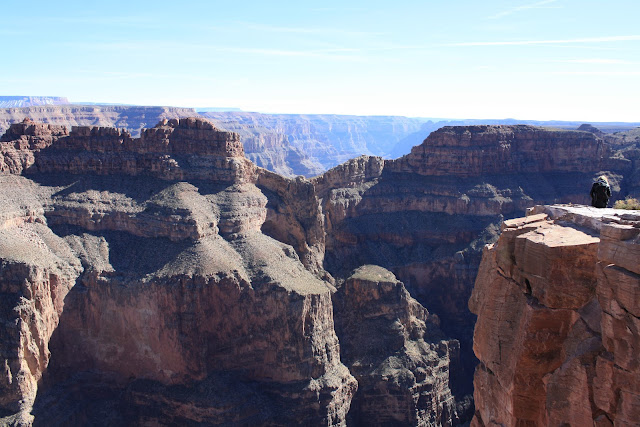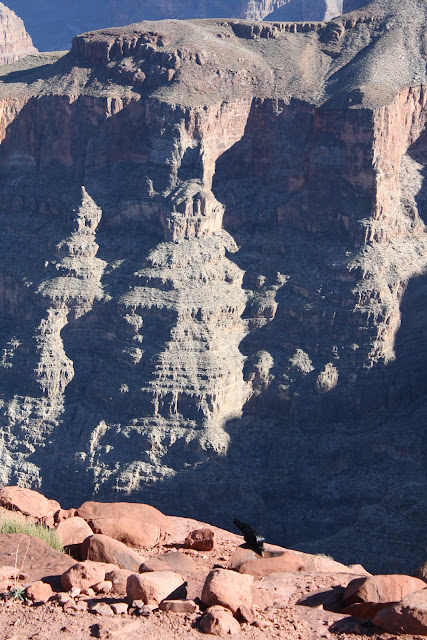Home of Eagle Point and the Skywalk.
Eagle Point
Eagle Point, a popular stop in Grand Canyon West, is the site of the famous Grand Canyon Skywalk and a collection of traditional Native American dwellings, including Hualapai Ranch, a western-themed town that evokes the spirit of the old west through gun fights, cattle drives, cowboy games, and horseback rides.
One of the highlights of Eagle Point is the Skywalk, which provides some of the most astounding, unobstructed views of the Grand Canyon possible. The horseshoe-shaped glass-bottomed Skywalk juts over a side of the Grand Canyon, suspended 70 feet/21 meters beyond the west rim and 4,000 feet/1,200 meters above the Colorado River. From Eagle Point you can take the 8-mile/12-kilometer trek to the Supai Village. A trail from Hualapai Hilltop drops steeply through a starkly beautiful landscape. Once you reach the village, you’ll find a café, general store, and a post office.
Be aware this is not part of the Grand Canyon National Park. It is soley owned and operated by the Hualapai Indian Reservation. It is not a self guided tour of the Grand Canyon as you will be bused from access point to access point. Tickets must be purchased at the reception area just beyond the main entrance to the canyon access gate. You will be asked if you are carrying any weapons at the gate. If you do not wish to be donating your weapon to the tribe, leave it home, as they are illegal on the reservation!
Stop one is western themed prop town where there is a created town of how the west once was. There are some activities for the kids and some food is available at this stop for purchase. This is not a working town but a recreated stage of days past "touristy".
Stop two is at the Skywalk where you have access to the skywalk and some access to the perimeter of the canyon at Eagle Point. In order to walk the Skywalk you must locker any cameras, phones, handbags, etc. There are photographers available at 3 points on the skywalk to take pictures of you and they will be available to purchase on your way out to the gift shop. There is a food truck on sight at this stop, but was not open on the day of our visit.
Stop three and for me the most enjoyable and awe inspiring. Although very crowded with various tour bus groups it was the most impressive visually. There is a very nice walkway of ledge approximately 1000 yards in length that is open on both sides into the Canyon. It has a small summit out at its tip that allows you a 360 degree view of the elbow in the Colorado River called Guano Point. Food is only available at this location if you purchased the meal package at the reception gate before getting on the buses. You will be abruptly turned away if you have no ticket. Be prepared for these points and you will very much enjoy this tourist attraction.
This location is much more of a commercial tour then a casually paced self-guided tour that you can do at your own pace on the South-Rim of the Grand Canyon National Park.
 |
| Joshua Tree Forest |
 |
| Joshua Tree Forest |
 |
| The Skywalk on the left |
 |
| Guano Point |
 |
| Guano Point |


































































